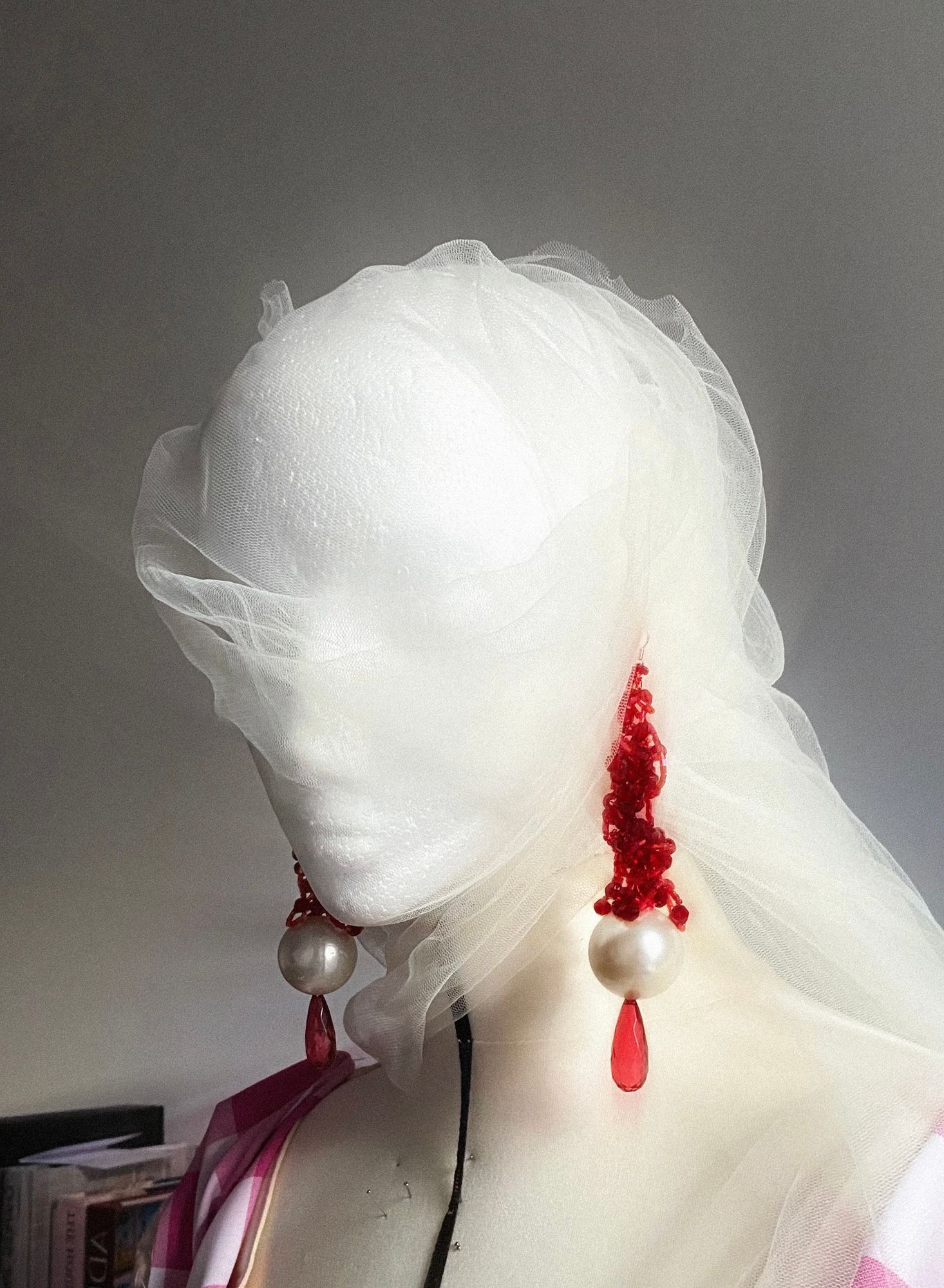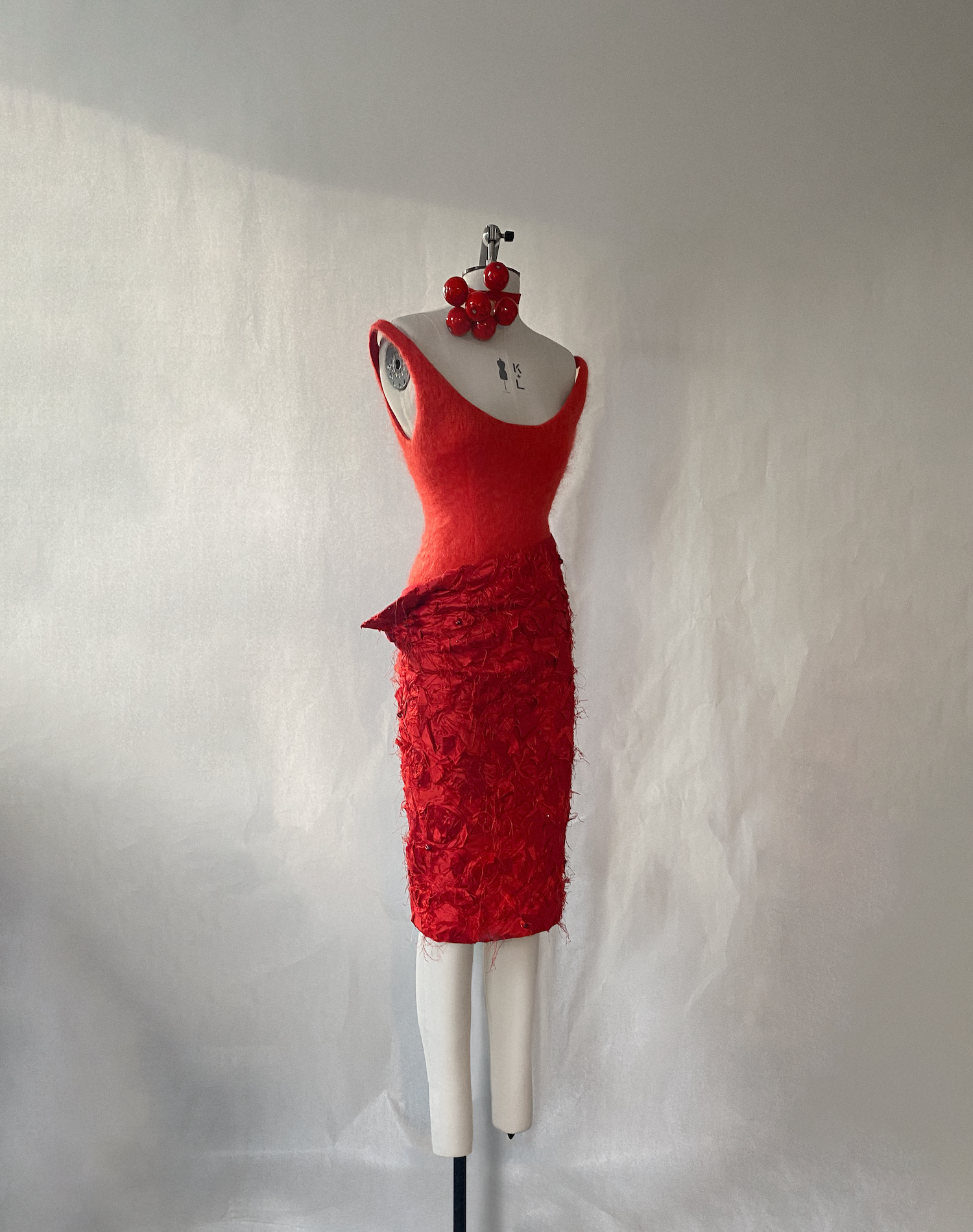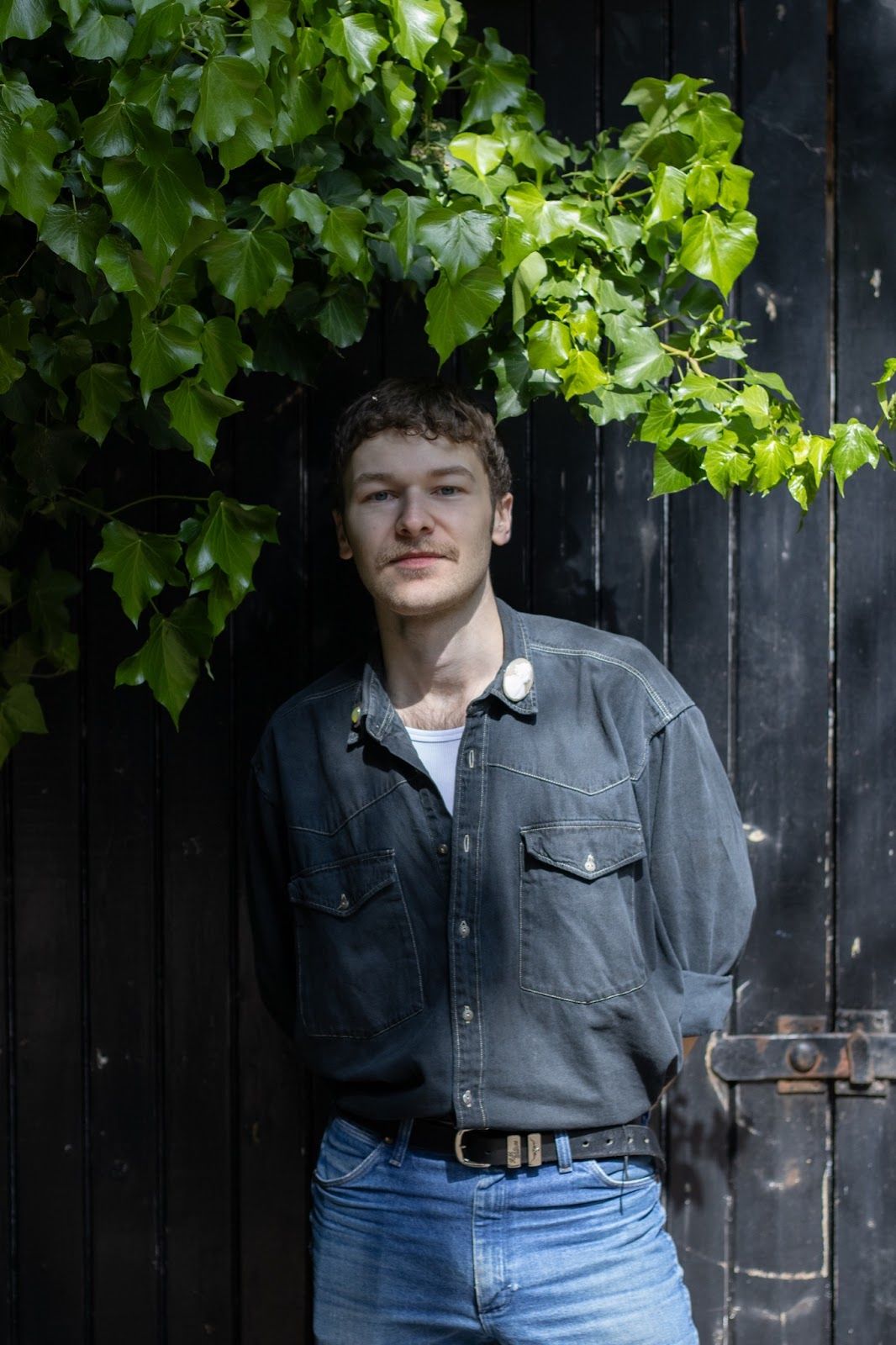The young designer discusses his collection inspired by Revolutionary France, along with his inspirations and career.
By Ethan Hall
At eight years old, Connor O’Grady trademarked his label in Australia. Now, at twenty-four, he is working on his debut collection, themed around 18th-century decapitations. Outside of this, freelance work is his bread and butter, funding his collection. The young designer draws inspiration from all things old and antique; his work features voluminous silhouettes and playful textures.
O’Grady grew up in the outer suburbs of Brisbane, where there were “a lot of paddocks” and “not a lot going on.” But he didn’t let this stop his drive. He describes how he “started sewing at six or seven, and then it just sort of snowballed.” From a young age, he toured Australia, winning competition after competition for design. He won his first at nine years old, and from there, began building a reputation that earned him a place at the London College of Fashion, studying Womenswear.
O’Grady described his collection’s inspiration as “18th-century decapitations, like in the [French] Revolution”—a theme echoed in his beaded, eyeball-inspired earrings, which hang from the ear by bejewelled veins. This stands in contrast to much of his current work. However, when asked if the collection would be similarly graphic, O’Grady clarified that the theme is more conceptual—nothing “too visceral.” His research focused on analyzing fashion plates from the period, from which he deduced three focal points for the collection.

The first is the neck-to-shoulder area, explored through form-fitting and high necklines contrasted with low-cut bodices. This is the most literal interpretation of the “decapitations” concept, simply by highlighting the area that would be severed. The second element is his use of color blocking. He distilled the color palettes of the fashion plates into solid tones for garments, such as “lilacs,” “greens,” and “blacks.” The third focuses on textures and prints of fabrics. O’Grady has used painting, distressing, and deconstructing fabrics to emulate the emotional turmoil of the time and create expressive textiles.

The notion of painting his designs is an ode to his youth, when he would paint garments with his art teacher. O’Grady is leaning into the nostalgia of childlike playfulness through this process. Conceptually, this approach has a Romantic quality (in the artistic sense), due to its ties to the French Revolution and that era’s reverence for youthful expression.
This inspiration aligns closely with O’Grady’s design language and personality—he’s “a sucker for antiques or anything old or Victorian.” For O’Grady, moving to London appealed to his love of history and antiques, especially the access to historic buildings and museums. Being able to see garments from across centuries and “getting to touch and feel” the fabrics and supplies has deepened his connection to fashion history. He describes a “big undercurrent” in his work as the relationship between fashion and history.
O’Grady is constantly looking to the past for inspiration. As a child, he created early designs based on old Hollywood silhouettes, which may be the root of this backward-looking instinct. Over time, his references have reached even further back to the Victorian and Tudor eras. He frequently picks up old “bits and bobs” from antique shops—deadstock fabrics and beads that have come apart from things like “a fifties garment that has fallen apart.” For him, it’s about “continuing [the item’s] life cycle.”
What stood out most in speaking with O’Grady is his deep commitment to the “life cycle” of fashion. He consistently works with ideas that show “respect to the people who came before” and consideration for those “who come after you.” Upcycling naturally stems from this mindset—he even expects people to upcycle his pieces. His outlook is summed up in how he puts it: “Caring for the people in ten years—if they’re gonna rip it apart, is there enough seam allowance there?” There’s passion in how he describes creating clothes by “just mashing them all together to make something of value that’s desirable,” allowing each piece to “have its own life.”

At just 24, a year out of LCF, O’Grady is building his first full collection with fresh energy and a strong foundation. He is an up-and-coming designer with substantial potential, backed by years of early success. His Wabi Sabi–esque view of fashion’s “lifecycle” resonates with a growing emphasis on sustainability and narrative in the fashion world—seen in the work of designers like Margiela. His collaborations through freelance work already showcase a refined, diverse set of techniques and perspectives. All signs point toward a technically and conceptually rich debut collection.